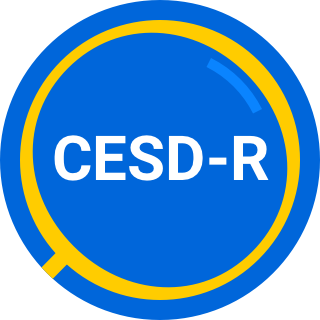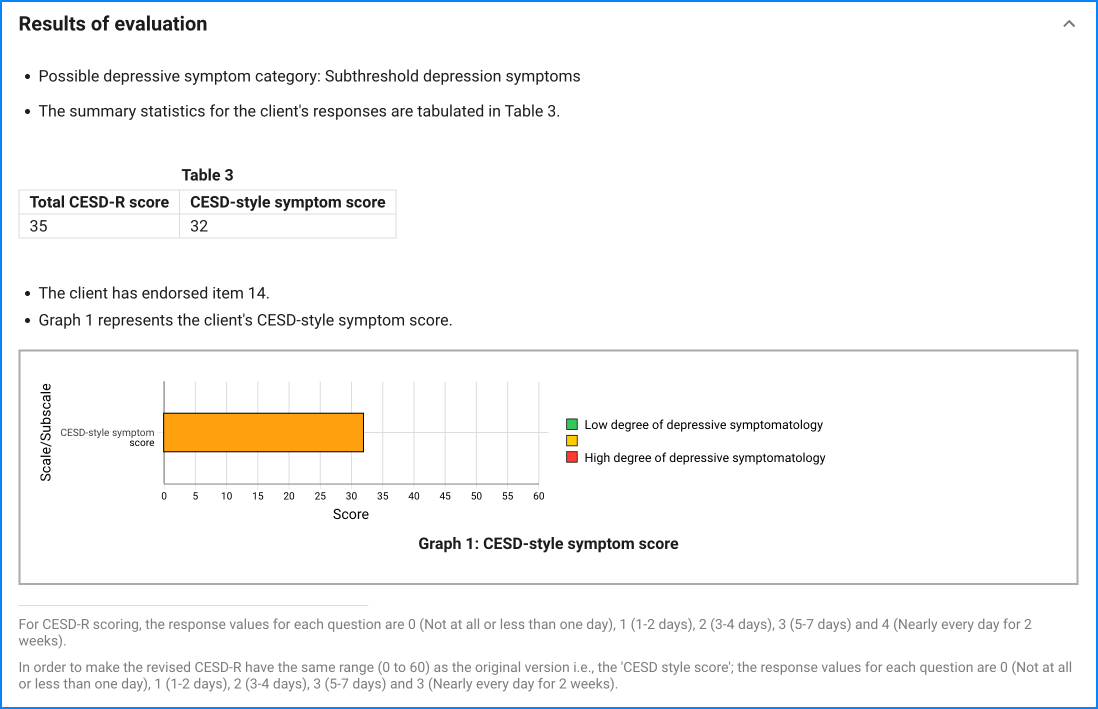The response values for each question are:
The Center for Epidemiologic Studies Depression Scale- Revised (CESD-R) is a 20 items screening test for depression and depressive disorder. The CESD-R measures symptoms of depression in nine different groups as defined by the American Psychiatric Association' Diagnostic and Statistical Manual (DSM-V) for a major depressive episode. These symptom groups are sadness (dysphoria), loss of interest (anhedonia), appetite, sleep, thinking/concentration, guilt (worthlessness), tired (fatigue), movement (agitation) and suicidal ideation.



